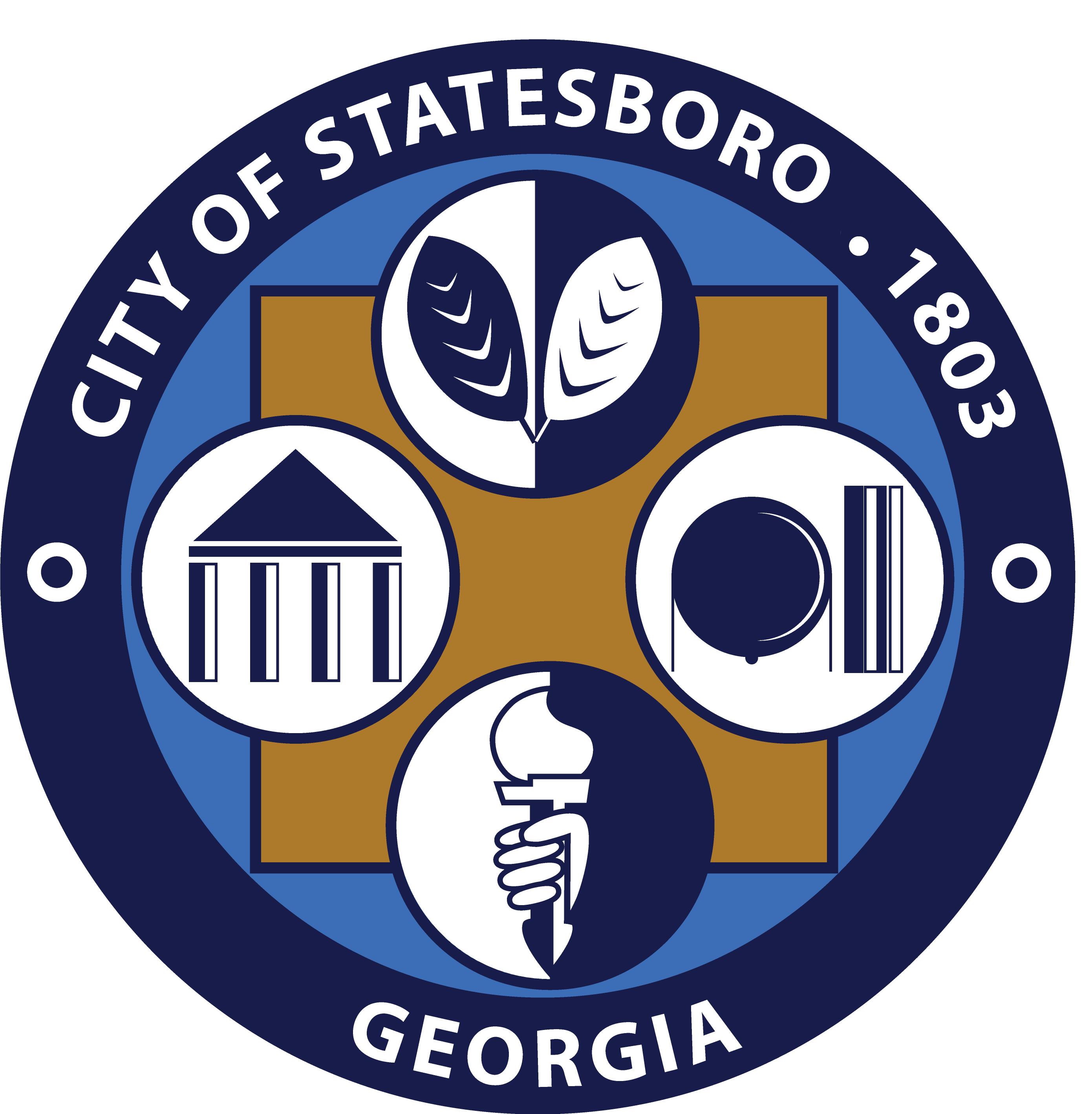The mission of the City of Statesboro is to provide the most responsive and progressive public services so that our residents, businesses, and visitors can enjoy the highest quality of life Statesboro has to offer.
Our Founding
In 1801, George Sibbald of Augusta donated land for a centrally located county seat. The Georgia Legislature created the town of Statesborough on December 19, 1803, some fifty miles northwest of Savannah. It was incorporated with a population of less than 25 people. It was not until 1866 that the state legislature granted a permanent charter changing the spelling of its name to the present “Statesboro.”
During the Civil War and General William T. Sherman’s famous March to the Sea through Georgia, a Union officer asked a saloon proprietor for directions to Statesboro. The proprietor replied, “You are standing in the middle of town,” [16] indicating its small size. The soldiers destroyed the courthouse, a crude log structure that doubled as a barn when court was not in session. After the Civil War, the small town began to grow, and Statesboro has developed as a major town in southeastern Georgia.Twentieth Century
Around the turn of the century, new businesses in Statesboro included stores and banks built along the town’s four major streets, each named Main. During the 1st decade of this century, cotton became the king in South Georgia. In 1908 Statesboro led the world in sales of long-staple Sea Island cotton, a specialty for the Low Country. For each bale of cotton sold in Savannah, ten bales were sold in Statesboro.
After the boll weevil decimated the cotton crop in the 1930s, local farmers shifted to another cash crop: tobacco. This transition allowed the community to recover from the Great Depression more quickly than most. By 1953 more than 20 million pounds of tobacco passed through warehouses in Statesboro, which was then the largest market in the “bright Tobacco Belt” spanning Georgia and Florida.
When the state announced it would fund an agricultural and mechanical school in Georgia’s First Congressional District, a Statesboro-Bulloch committee emerged. More than 100 individuals successfully lobbied for Statesboro as the ideal location.Statesboro Today
According to the 2010 Census, The city itself had a population of 28,422. The city had an estimated 2016, population of 31,419. In 2017, Statesboro was selected in the top 3 of the national America’s Best Communities competition and was named one of nine Georgia “live, work, play” cities by the Georgia Municipal Association.
Education
Statesboro is home to three institutions of higher learning: Georgia Southern University, East Georgia State College (satellite campus) and Ogeechee Technical College. For K-12 education, it is the home to one high school (Statesboro High), two middle schools (Langston Chapel Middle and William James Middle) and five elementary schools (Julia P. Bryant, Sallie Zetterower, Mattie Lively, Langston Chapel, and Mill Creek). Statesboro is also home to three private schools (Bulloch Academy, Trinity Christian, and Bible Baptist Christian) and one charter school (Statesboro STEAM – College, Careers, Arts, & Technology Academy).
Healthcare
The City of Statesboro is a leader in health care in southeast Georgia. East Georgia Regional Medical Center located within the city limits employs more than 750 employees and 75 physicians representing a wide range of specialties. East Georgia is a $60 million dollar hospital with approximately 150-beds and a Women’s Pavilion. The hospital is accredited by the Joint Commission on Accreditation of Healthcare Organizations, a distinction that is awarded only to those healthcare facilities that maintain the highest standards of quality.
Industry
Statesboro is home to multiple manufacturing & warehouse facilities: Briggs & Stratton, GAF, Great Dane, ThermoKing, Viracon, WL Plastics, and Wal-Mart Distribution Center (the chain’s largest in the world).
Statesboro’s downtown was named one of eight “Renaissance Cities” by Georgia Trend magazine. The economy of Statesboro consists of a diverse blend of education, manufacturing, and agribusiness sectors. Statesboro serves as a regional economic hub and has more than one billion dollars in annual retail sales.
